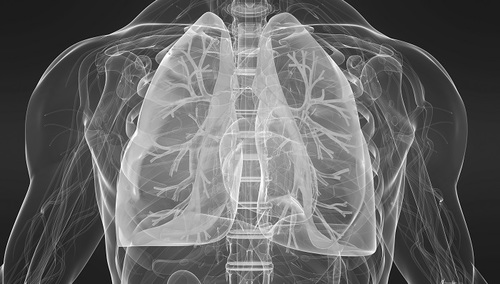A new international guideline has been developed to help physicians diagnose Idiopathic pulmonary fibrosis (IPF), a rare and often fatal lung disease whose cause is unknown.
The 2018 clinical practice guideline was developed by experts representing four major respiratory societies — the American Thoracic Society (ATS), the European Respiratory Society (ERS), Japanese Respiratory Society (JRS) and the Latin American Thoracic Society (ALAT), and is published online and in the American Journal of Respiratory and Critical Care Medicine.
The 29-member guideline committee included international clinical and scientific experts and an IPF patient. The committee discussed the findings of all accumulated evidence pertinent to IPF, rated the strength of those findings using the GRADE (Grading of Recommendations, Assessment, Development and Evaluation) system and made recommendations.
Chief among the refinements included in the criteria is the use of four diagnostic categories based on high-resolution tomography (HRCT) of the lung: usual interstitial pneumonia (UIP) pattern, probable UIP pattern, indeterminate pattern and alternative diagnosis.
The committee recommended the same terminology for both images produced using HRCT of the lung and microscopic analysis of biopsied tissue. Consistent categorization should facilitate multidisciplinary discussions (MDD) between a pulmonologist (and in some cases, a rheumatologist), radiologist and pathologist of a diagnosis, the committee wrote.
The committee made the following recommendations for diagnosing IPF in all adult patients with newly detected interstitial lung disease (ILD) of unknown cause:
- For all patients, a detailed history should be taken of both medication use and environmental exposures and serological testing should be performed to exclude connective tissue disease as a potential cause of the ILD.
- For patients with a HRCT pattern of probable UIP, indeterminate, or an alternative diagnosis, conditional recommendations were made for performing bronchoalveolar lavage (BAL) and surgical lung biopsy (SLB); due to lack of evidence, no recommendation was made for or against performing transbronchial lung biopsy (TBBx) or lung cryobiopsy.
- Conditional recommendation for MDD to aid in diagnosing IPF, particularly when the HRCT pattern has features of probable UIP pattern, indeterminate or alternative diagnosis.
- In contrast, for patients with newly detected ILD who have a HRCT pattern of UIP, strong recommendations were made against performing SLB, TBBx and lung cryobiopsy; a conditional recommendation was made against performing BAL.
- Strong recommendation against measurement of serum biomarkers for the sole purpose of distinguishing IPF from other ILDs.





